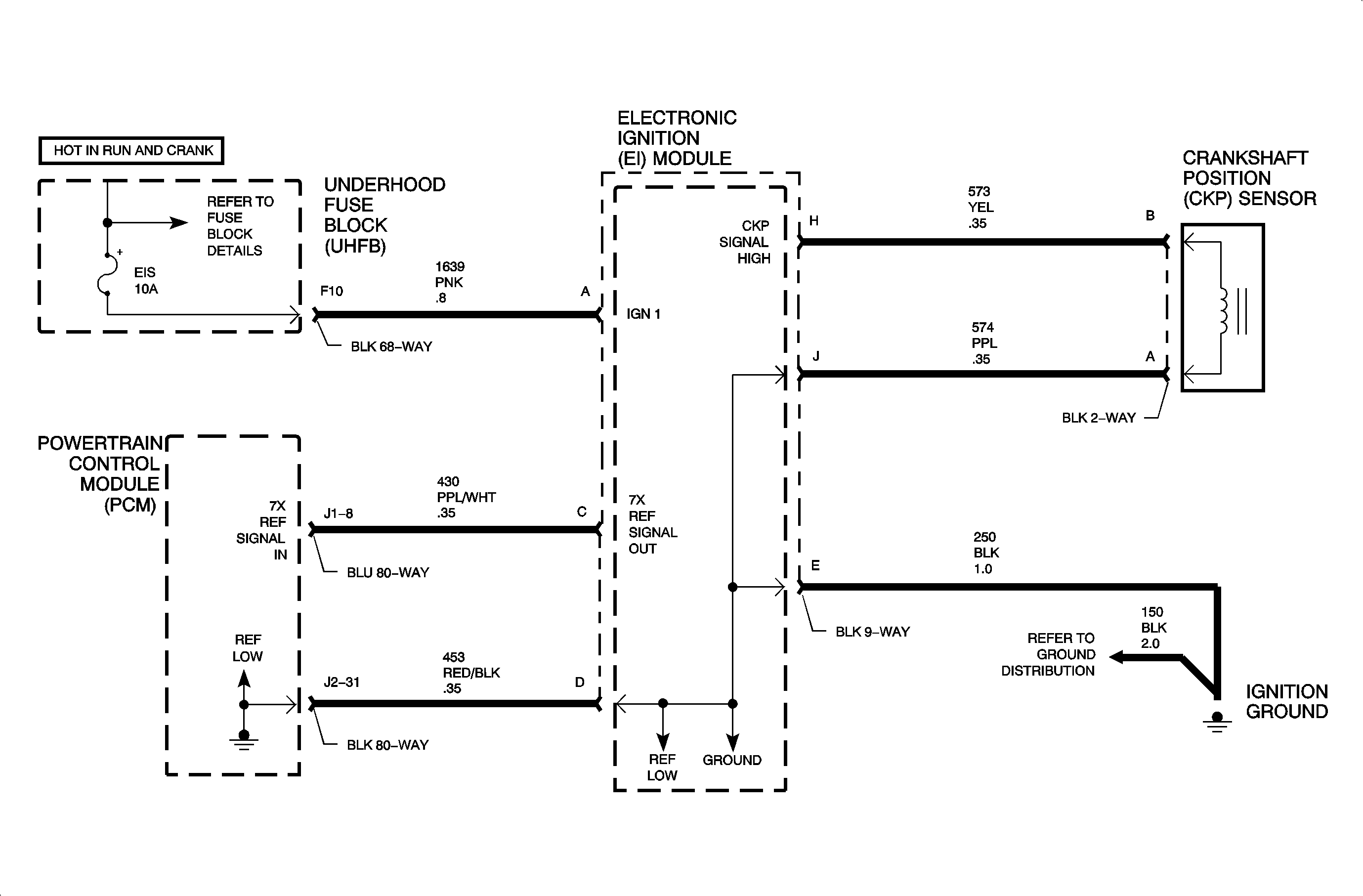
The crankshaft position (CKP) sensor produces an AC voltage of different amplitude and frequency depending on the velocity of the crankshaft. This AC voltage signal is fed into the EI module, which is converted to a square wave, 0 or 5 volts, to the PCM. The crankshaft has 7 total machined notches, 6 of which are spaced 60° apart. The remaining tooth is 10° before the #4 cylinder TDC notch. This extra notch is used by the PCM to determine the position of the top dead center #4 cylinder necessary to synchronize engine position. The PCM must know precisely the degree of variability between crankshaft notches in order to correctly perform misfire diagnostics. In order to know this variability, the PCM must perform a "crankshaft learn procedure". The PCM needs to learn the crankshaft notch variation only once unless a crankshaft or PCM is replaced. DTC P1336 sets when the PCM has not learned the crankshaft notch variation due to PCM replacement or reprogramming when the engine is running.
Conditions for Setting the DTC
DTC P1336 will set if the crankshaft notch variation has not been learned when:
| • | The condition exists for longer than 0.5 seconds. |
| • | The engine is running. |
| • | No cam or crankshaft DTCs have been set. |
DTC P1336 diagnostic runs once per ignition cycle with the engine running.
DTC P1336 is a type A DTC.
Diagnostic Aids
Important: If a crankshaft or PCM has been replaced, the crankshaft must be relearned.
Important: Make sure no cam or crankshaft DTCs are set before the crankshaft notch variation is learned.
Using the scan tool, perform the CRANKSHAFT POS. VARIATION LEARN procedure on the following page.
Crankshaft Position Variation Learn Procedure
- Start the engine and allow the ECT to reach at least 70°C (158°F).
- Turn the A/C OFF and place the transaxle in Park or Neutral.
- Using the scan tool, perform the CRANKSHAFT POS. VARIATION LEARN procedure.
Crankshaft Position Variation Procedure Explained
When the procedure is initiated, the scan tool will send a message to the PCM to enable crank learn.
Important: The PCM will only learn the crankshaft when the procedure is performed with a scan tool.
When the engine coolant temperature is above 70°C (158°F) with the A/C request OFF and the transaxle in Park or Neutral, the PCM will be ready to learn the crankshaft notch variation. The accelerator will now have to be manually depressed to wide-open throttle and released. The PCM will cut fuel off above 4,000 RPM and will allow the engine to decelerate. The PCM will learn the crankshaft as the engine decelerates.
If the PCM will not learn the crankshaft, the following are some diagnostic aids that may help to complete the learn procedure:
Scan Tool Display | Possible Causes |
|---|---|
Factors out of range | The reluctor wheel-machining quality, a run out, or an incorrect air gap |
Opposing factors out of range | Disturbance-noise on the crank sensor circuit -- Reattempt the learn procedure. |
Sum out of range | The engine is too cold. Run the engine above 70°C (158°F) and reattempt the learn procedure. |
Crank pulse count error | Cam or crank sensor DTC is set. Diagnose that DTC first. |
